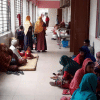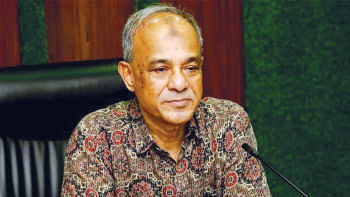Fix persistent shortages of medical college teachers

A little over a year ago, we were alarmed to learn from the Directorate General of Medical Education (DGME) that 42 percent of faculty positions in the 37 government medical colleges were vacant. Now, according to a report by this daily, that number has increased to 43 percent, in a further blow to the education and professional prospects of medical students as well as the future of our healthcare system. It is a truism that good education requires good teachers. Students in many of these colleges, however, would settle for any teacher at all, regardless of their quality. For future healthcare professionals to be reduced to such desperation is neither fair nor conducive to our vision of a robust healthcare system that serves patients and reverses the trend of medical tourism.
The severity of this crisis is further underscored by the fact that a staggering 65 percent of professor posts in the medical colleges remain unfilled. At least four medical colleges have no professor at all, while 18 others are struggling with only one to five professors each. The shortage is particularly acute in the 23 newer colleges established during the Awami League's rule, where 75 percent of professor positions remain vacant. This critical gap at the top—depriving students of guidance from experienced mentors—is reflected down the ranks across all colleges, with 45 percent of associate professor posts and 51 percent of assistant professor posts also lying vacant.
According to insiders, this is mostly a result of bureaucratic inertia, including delays in promotions and complexities in determining seniority between cadre and non-cadre doctors, including medical teachers. Many were also sidelined as Officers on Special Duty (OSD) after the political changeover on August 5 last year, exacerbating the crisis. According to an estimate, some 7,500 doctors across different grades are awaiting promotions. The backlog has sparked protests by a platform of cadre doctors who, on February 25, announced a two-hour work abstention starting March 8 if promotions are not granted. They also threatened an indefinite strike from March 11 if their demands remain unmet. Students, too, have staged protests demanding a resolution. Clearly, this issue requires urgent and well-planned interventions, preferably by establishing a separate system for overseeing the recruitment and promotion of doctors, health officials, and medical teachers.
Teacher crisis is not the only problem plaguing public medical colleges. Some of them have no hospitals of their own, forcing students to travel elsewhere for practical lessons, resulting in a significant loss of study time. Many have attached hospitals, but those are also infested with problems including inadequate facilities, irregularities, mismanagement, poor sanitation, crisis of proper meals, etc. These issues must also be addressed with equal urgency. For now, however, fixing the public medical education sector should be a priority as its failure directly affects the long-term future of healthcare in Bangladesh.

 For all latest news, follow The Daily Star's Google News channel.
For all latest news, follow The Daily Star's Google News channel. 








Comments